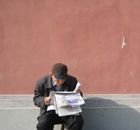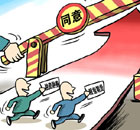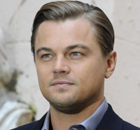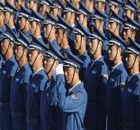-
-
China Daily E-paper
Alexis Hooi
A capital move to showcase Chinese culture
By Alexis Hooi (China Daily)
Updated: 2010-02-12 07:21
 |
Large Medium Small |
When I visited Jiayuguan city of Gansu province last summer, I was pleasantly surprised to find a Great Wall Museum outside the historical fort that marked the western frontier of the empire in ancient times.
From complete bilingual explanations to a convenient layout of well-kept exhibits, the museum was a welcome departure from the usual neglect of local ones in remote areas of the country.
So it was a waste that the Jiayuguan museum seemed virtually empty during a peak travel season.
It is easy to understand the nonchalance for such museums, given the country's size and countless archeological finds.
The situation is also in stark contrast to the growing demand for museums in Beijing.
The capital is already set to expand and improve its exhibits during this "Golden Year of Museums".
Eight museums including the China National Museum, Beijing Museum of Natural History, Beijing Aviation Museum and the Beijing Arts and Crafts Museum, will be expanded or reconstructed to accommodate more visitors.
By the end of last year, Beijing museums registered with the city's administration of cultural heritage numbered more than 150 and attracted more than five million visitors.
That is also why Beijing is well-poised to become the capital for showcasing Chinese history and culture through its museums, by drawing in part from the rich storehouse of exhibits throughout the country.
Many already saw how Beijing's Capital Museum held a spectacular exhibition during the 2008 Beijing Olympics, when it loaned major cultural relics stretching back more than five millenia from museums nationwide to the delight of visitors from home and abroad.
More than half a million people filled the exhibition halls in a few months to experience first-hand prehistoric pottery, ceremonial bronze ware, Qin Dynasty terracotta figures, Han aristocratic jade burial artifacts, Ming porcelain and much more.
The exhibition allowed visitors to see the priceless relics in one setting and successfully encapsulated the glory of Chinese culture to inspire the young and old.
It also showed how Beijing museums can be best-suited to draw on relics nationwide and present them to the world, by boosting efforts to loan and rotate collections or setting them as permanent exhibitions so that they do not go to waste in isolated areas.
Museums in the capital can also be brought closer together to form clusters that showcase Chinese civilization in its many aspects, similar to American ones that adorn the avenues of the United States capital.
Authorities have been reviving talk of Beijing's path toward a global city in the next few decades.
The capital's per capita GDP already surpassed $10,000 last year to rank it among the richest cities in the country. Still, the capital is faced with basic concerns such as overcrowding, housing, healthcare and transportation that challenge its ambitions to become a major metropolis of 18 million people.
But many know that channels for creativity and culture are equally important to develop a world-class capital for a country with growing influence on the global stage.
Building up the country's cultural capital and heritage through its capital's museums for all to appreciate can be one way to achieve that.
E-mail: alexishooi@chinadaily.com.cn
(China Daily 02/12/2010 page8)









